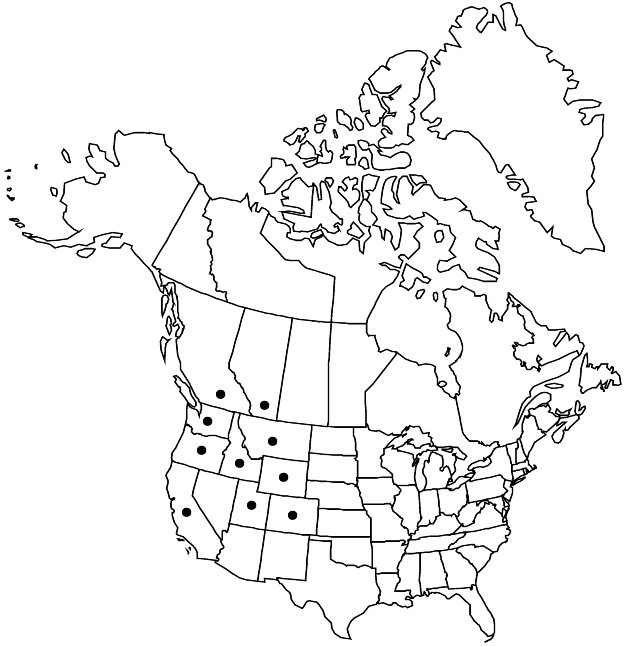Stellaria obtusa
Bot. Gaz. 7: 5. 1882.
Plants perennial, creeping, often matted but not forming cushions, rhizomatous. Stems prostrate, branched, 4-sided, 3–23 cm, internodes equaling or longer than leaves, glabrous, rarely pilose. Leaves sessile or short-petiolate; blade broadly ovate to elliptic, 0.2–1.2 cm × 0.9–7 mm, base round or cuneate, margins entire, apex acute, shiny, glabrous or ciliate near base. Inflorescences with flowers solitary, axillary; bracts absent. Pedicels spreading, 3–12 mm, glabrous. Flowers 1.5–2 mm diam.; sepals 4–5, veins obscure, midrib sometimes apparent, ± ovate, 1.5–3.5 mm, margins narrow, scarious, apex ± obtuse, glabrous; petals absent; stamens 10 or fewer; styles 3(–4), curled, shorter than 0.5 mm. Capsules green to pale straw colored, translucent, globose to broadly ovoid, 2.3–3.5 mm, 1.9–2 times as long as sepals, apex obtuse, opening by 6 valves; carpophore absent. Seeds grayish black, broadly elliptic, 0.5–0.7 mm diam., finely reticulate. 2n = 26, 52, ca. 65, ca. 78.
Phenology: Flowering late spring–summer.
Habitat: Moist areas in woods, shaded edges of creeks, talus slopes
Elevation: 300-3400 m
Distribution

Alta., B.C., Calif., Colo., Idaho, Mont., Oreg., Utah, Wash., Wyo.
Discussion
Selected References
None.